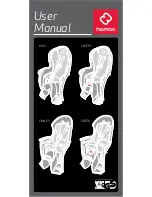
72
73
PART II
2. UndeRsTAndInG
ComPosITes (CARBon fIBeR)
All riders must understand a fundamental reality of
composites. Composite materials constructed of
carbon fibers are strong and light, but when crashed
or overloaded, carbon fibers do not bend, they break.
What Are Composites?
The term “composites” refers to the fact that a part
or parts are made up of different components or
materials. You’ve heard the term “carbon fiber bike.”
This really means “composite bike.”
Carbon fiber composites are typically a strong, light
fiber in a matrix of plastic, molded to form a shape.
Carbon composites are light relative to metals. Steel
weighs 7.8 grams/cm3 (grams per cubic centimeter),
titanium 4.5 grams/cm3, aluminum 2.75 grams/cm3.
Contrast these numbers with carbon fiber composite
at 1.45 grams/cm3.
The composites with the best strength-to-weight
ratios are made of carbon fiber in a matrix of epoxy
plastic. The epoxy matrix bonds the carbon fibers
together, transfers load to other fibers, and provides
a smooth outer surface. The carbon fibers are the
“skeleton” that carries the load.
Why Are Composites Used?
Unlike metals, which have uniform properties in all
directions (engineers call this isotropic), carbon fibers
can be placed in specific orientations to optimize the
structure for particular loads. The choice of where
to place the carbon fibers gives engineers a powerful
tool to create strong, light bicycles. Engineers may
also orient fibers to suit other goals such as comfort
and vibration damping.
Carbon fiber composites are very corrosion resistant,
much more so than most metals. Think about carbon
fiber or fiberglass boats.
Carbon fiber materials have a very high strength-to-
wieght ratio.
What Are The limits of Composites?
Well designed “composite” or carbon fiber bicycles
and components have long fatigue lives, usually
better than their metal equivalents.
While fatigue life is an advantage of carbon fiber,
Cannondale still urges you to regularly inspect your
carbon fiber frame, fork, or components.
Carbon fiber composites are not ductile. Once a
carbon structure is overloaded, it will not bend; it will
break. At and near the break, there will be rough,
sharp edges and may be delamination of carbon fiber
or carbon fiber fabric layers. There will be no bending,
buckling, or stretching.
If you hit something or have A Crash,
What Can you expect from your Carbon
fiber Bike?
Let’s say you hit a curb, ditch, rock, car, fallen cyclist
or other object. First, read the Important warnings at
the beginning of PART II Section A. Bicycles Cannot
Protect You in this manual.
At any speed above a fast walk, your body will
continue to move forward, the momentum carrying
you over the front of the bike. You cannot and will
not stay on the bike and what happens to the frame
and fork is irrelevant to what happens to your body.
What should you expect from your carbon frame? It
depends on many complex factors, which is why we
tell you that crash worthiness cannot be a design
criteria. With that important note, we can tell you
that if the impact is hard enough, the fork or frame
may be completely broken. See Figure A on page 68.
Note the significant difference in behavior between
carbon and metal. 1. Understanding Metals in this
section. Even if the carbon frame was twice as
strong as a metal frame, once the carbon frame is
overloaded it will not bend, it will break completely.
Our carbon frames/fork/components are designed
for normal riding loads with a factor of safety. These
frames/fork/components will be broken by some
crash or impact loads.
See “Composite Frame, Fork, And Component
Inspection” on next page.
















































